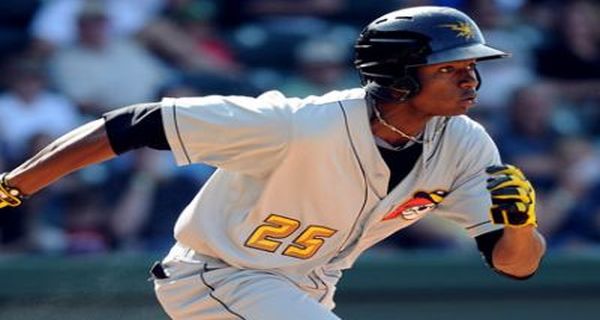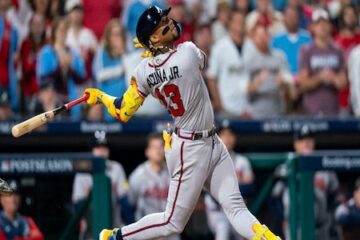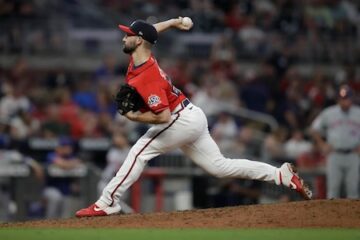2014 Fantasy Baseball: Week Three Musings


A few tweets from my colleague, Brett Talley, serve as the motivation for one of my talking points in this week’s musings. The excitement in the fantasy community over the promotion of outfielder George Springer to the Astros is justified. However, it also provides a golden opportunity to discuss the strategy of stashing prospects.
Don’t Be That Guy or Gal, No One Likes a Lowball Offer.
The headline says it all. Brett had a mini three tweet rant about some God awful trade offers he received in one of his fantasy leagues. You can read those tweets here, here, and here. Lowball offers are a good way to piss off other owners in the league, and a bad way to open up dialogue to counter offers. While bad offers are made all year round, they are especially prevalent in the first month of the season.
I blame years of being hammered over the head with buy low, sell high articles for this phenomenon. With the wealth of information available at the fingertips of fantasy gamers, the art of buying low and selling high has largely gone the way of the Dodo. Sure, some small scale deals can be made where an owner capitalizes on a hot or cold start, but no one in a competitive league is going to deal a healthy top 100 pick for a bag of baseballs and bucket of sunflower seeds. Don’t be a knuckle head and make an offensive offer.
Not lowballing an owner for a top 100 player doesn’t mean don’t engage that owner in dialogue about acquiring him. Now is a good time to define engaging an owner in dialogue. In addition to my gears being ground by early season lowball offers, they’re also ground by an owner saying “what do you want for your struggling player?” Dialogue with another owner should demonstrate a willingness to work out a trade, not asking another owner to concoct a trade for you. Look over the other owner’s roster, see where they have holes, and throw some names out there. Trading can be a lot of fun and is a necessary part of competing for a league title, so don’t get yourself black balled by other owners by being a fool in April.
Prospects Are All the Rage
Gamers getting excited about and rostering prospects isn’t a startling new development, but knowing a thing or two about the ins and outs of doing so is important. First of all, my analysis pertains to yearly leagues and not keeper or dynasty leagues. Those leagues are a different animal, and most owners participating in them don’t need a lecture about how to appropriately utilize their roster spots on youngsters.
Yearly league gamers, though, could use a friendly reminder not to go overboard. Adjusting to life in the majors is tough as hell. The immediate success of recent prospects such as Mike Trout, Bryce Harper, and Jose Fernandez (just to name a few) is the exception, not the rule. I do think that we’re getting to a point where younger players are more prepared for facing the best of the best, and part of that is players playing year round starting at a young age. The best prospects have been playing against one another in All-Star games and showcases dating back to their high school days. That said, there is still an adjustment period for all prospects making the leap to the bigs, and not all are ready to make waves in fantasy leagues.
It’s important to read scouting reports from reputable outlets such as Baseball America, Baseball Prospectus, and Minor League Pipeline. Numbers are great, but box score scouting is dangerous (believe me, I was in the #FreeKila movement). It’s equally important to recognize how organizations handle their prospects. Small market teams such as the Rays, for instance, are much more cognizant of service time than their bigger market counterparts. I honestly believe that if Xander Bogaerts were a member of the Rays, he would have opened the year in the minors. Obviously he’s not a Ray, but the bigger point is that just because a guy appears to be ready doesn’t mean he’ll be getting the call today, tomorrow, a week, or a month from now.
A prospect playing for a small market team who this hypothetical Bogaerts on the Rays situation could apply to is Gregory Polanco. He’s an exciting, toolsy right fielder on the Pirates, and he’ll almost certainly be patrolling the outfield next to Andrew McCutchen sometime this summer. His promotion is unlikely to take place in April or May, though, because the Pirates would be foolish to start his arbitration clock this early. Tim Williams wrote about how the Super Two date is likely to impact Polanco, and he even estimated the date to fall around June 10th this year.
June can’t come soon enough for a number of prospects, and Polanco is unlikely to be alone waiting until then for a promotion. Other notable prospects that come to mind who I expect to toil in the minors until at least then are Archie Bradley of the Diamondbacks, Jon Singleton of the Astros, Noah Syndergaard of the Mets, and Eddie Butler of the Rockies among others such as injured shortstops Javier Baez of the Cubs and Addison Russell of the Athletics. I think all of those prospects will see time in the majors this year, but if you have shallow benches in your league, you are allowed to set your roster on a daily basis, or the league is a shallow mixed format, rostering any of them now probably isn’t worth the hassle.
League format and the rules for leagues are huge in determining the worthiness of devoting a bench spot to a prospect. The larger the bench, the more worthwhile it becomes to stash a blue chip prospect. Furthermore, if you play in a league that only allows you to set your lineup once a week, you should be stashing at least one high end prospect. The reason for this is simple, in weekly lineup leagues you can’t take advantage of shuffling players in and out of your lineup to hide platoon weaknesses. Guys like Matt Joyce see their value plummet since he’ll either eat zeros in your lineup when he’s benched against a lefty, or he’ll hurt your team’s fantasy stats when he’s left in to face a southpaw. In larger leagues, even weekly leagues, it’s important not to go overboard stashing prospects in case the injury bug bites your team. The replacement level player available on the waiver wire is poor in large mixed leagues and only formats, so whether it’s a daily lineup or weekly lineup league, be careful getting too prospect happy.
I love prospects and young players. I’m guilty of keeping the hype machine humming, but moderation is key, and reserving stashing for high end prospects is important. Sure, Tommy La Stella is probably going to supplant Dan Uggla at second base for the Braves this year, but in most leagues he’s not a guy who needs to be rostered yet. Moderation does not mean avoid owning or stashing any prospects. I’ve seen fantasy pundits discuss entirely avoiding prospects altogether, and I think that’s a foolish stance. There is no benefit I can see to eliminating part of the player pool to follow a hard and fast rule like “avoid prospects.” If someone in your league chooses to do that, great, one less person vying for the services of a potential impact player when they get the call.





